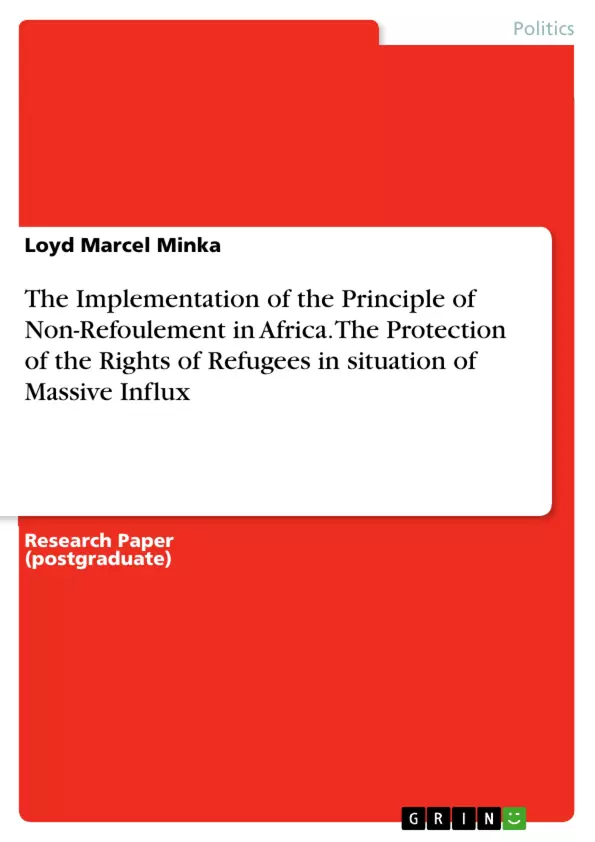There are many international standards or instruments which protect the rights of refugees to non-refoulment. These instruments are: the United Nations convention relating to the status of refugees of 1951 and its protocol of 1967, the international covenant on civil and political rights of 1966, the United Nations convention against torture of 1989 and the Convention of the Organization of the African Unity governing the specific aspects of refugee problems in Africa adopted in 1969. These instruments play a great role in favoring the implementation of the principle of non-refoulement.
Inhaltsverzeichnis (Table of Contents)
- 1st PART: Legal basis of the principle of non-refoulement, its Beneficiaries, its Territorial application and the Exceptions to this principle
- Chapter 1: The Principle of Non-Refoulement under International Human Rights Law
- Chapter 2: The beneficiaries, Territorial Application and the Exceptions to the principle of non-refoulement
- 2nd PART: Practice of States in regard to the principle of non-refoulement: The Case of African States whom receive asylum-seekers on their territory
- Chapter 3: Practice of African States in regard to the principle of non-refoulement: The Case of Democratic Republic of Congo, Burundi, Tanzania (Rwandan refugees), Sierra Leone, Ivory Coast, Ghana, Togo, Nigeria (Liberian refugees) and Cameroon (CAR refugees)
- Chapter 4: Recommendations for the effective implementation of the principle of non-refoulement by all the African States: Some Proposals for change in Africa
Zielsetzung und Themenschwerpunkte (Objectives and Key Themes)
This work aims to examine the implementation of the principle of non-refoulement in Africa, specifically within the context of African states receiving asylum seekers. It seeks to understand the legal basis of the principle, its beneficiaries, territorial application, and exceptions, as well as the practical challenges and recommendations for its effective implementation in Africa.
- Legal basis and scope of the principle of non-refoulement
- The beneficiaries and territorial application of the principle
- The exceptions to the principle and their implications
- Challenges to the implementation of the principle in Africa
- Recommendations for improving the implementation of the principle in African states
Zusammenfassung der Kapitel (Chapter Summaries)
Chapter 1 delves into the legal basis of the principle of non-refoulement under international human rights law. It examines the historical development of the principle and its evolution into a norm of customary international law. Chapter 2 explores the beneficiaries of the principle, its territorial application, and the exceptions to its application. It also discusses the role of international organizations and treaties in safeguarding the principle.
Chapter 3 analyzes the practical implementation of the principle of non-refoulement in a selection of African states, including the Democratic Republic of Congo, Burundi, Tanzania, Sierra Leone, Ivory Coast, Ghana, Togo, Nigeria, and Cameroon. This chapter examines the challenges faced by these states in upholding the principle, including political instability, resource constraints, and societal pressures. Chapter 4 presents recommendations for improving the implementation of the principle of non-refoulement in all African states, focusing on policy reforms, capacity building, and regional cooperation.
Schlüsselwörter (Keywords)
This work focuses on the principle of non-refoulement, refugee law, asylum seekers, human rights, international law, African states, implementation challenges, recommendations, and policy reforms.
- Citation du texte
- Loyd Marcel Minka (Auteur), 2017, The Implementation of the Principle of Non-Refoulement in Africa. The Protection of the Rights of Refugees in situation of Massive Influx, Munich, GRIN Verlag, https://www.grin.com/document/358050



